Valentine’s Day 2014 In Space: Ten Photos That Prove The Universe Is A Romantic At Heart
Down here on Earth, Valentine's Day is all about love, expressed in roses, chocolates, jewelry, and other gestures of affection. But even up in the cosmos, there are plenty of objects -- ranging from rose nebulae to heart-shaped craters on Mars -- that prove the universe is quite the romantic.
Heart on Mars

The heart-shaped feature is the result of an impact crater. The image was captured using the Mars Reconnaissance Orbiter's Context Camera. The feature is located in Arabia Terra and was previously imaged by the Viking 1 spacecraft in 1977, notes Malin Space Science Systems.
Rosette Nebula
NGC 2237, better known as the Rosette Nebula, is located around 5,000 light-years from Earth, in the constellation Monoceros, and is part of a larger star cluster, classified as NGC 2244. According to NASA, the Rosette Nebula’s petals are a stellar nursery, a perfect mix of gas and dust with plenty of star-formation activity.
Heart Nebula
The Heart Nebula, IC 1805, is an emission nebula, a mix of ionized gas and dust. The nebula is located around 7,500 light-years from Earth, in the Perseus Arm of the Milky Way, notes NASA. At the heart of the nebula is a young star cluster containing newborn stars that are glowing bright.
Heart and Soul Nebulae
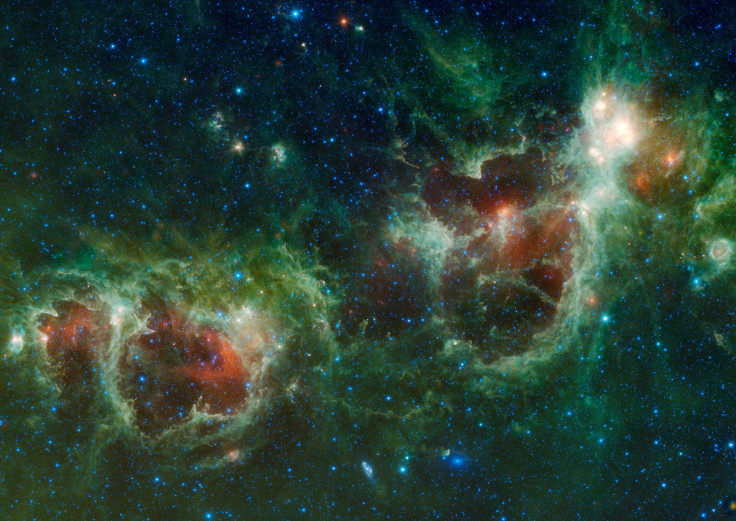
Right next to the Heart Nebula, we find the Soul Nebula, IC 1848. The nebulae measure 580 light-years across and both are experiencing an increased level of star formation activity.
A “Blooming Rose”
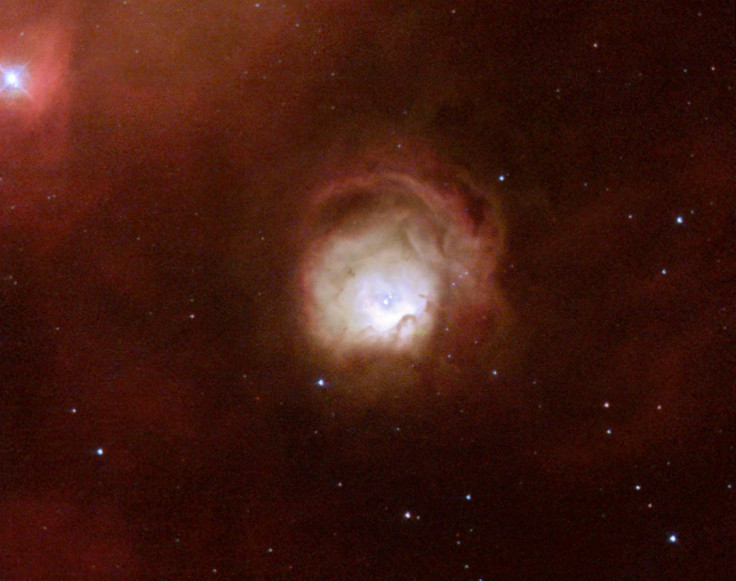
The Hubble Space Telescope captured this nebula, classified as N11A, located in the Large Magellanic Cloud, a small galaxy located 163,000 light-years from Earth. The nebula contains hot young stars in its center, causing the surrounding gas to glow.
Ring Nebula
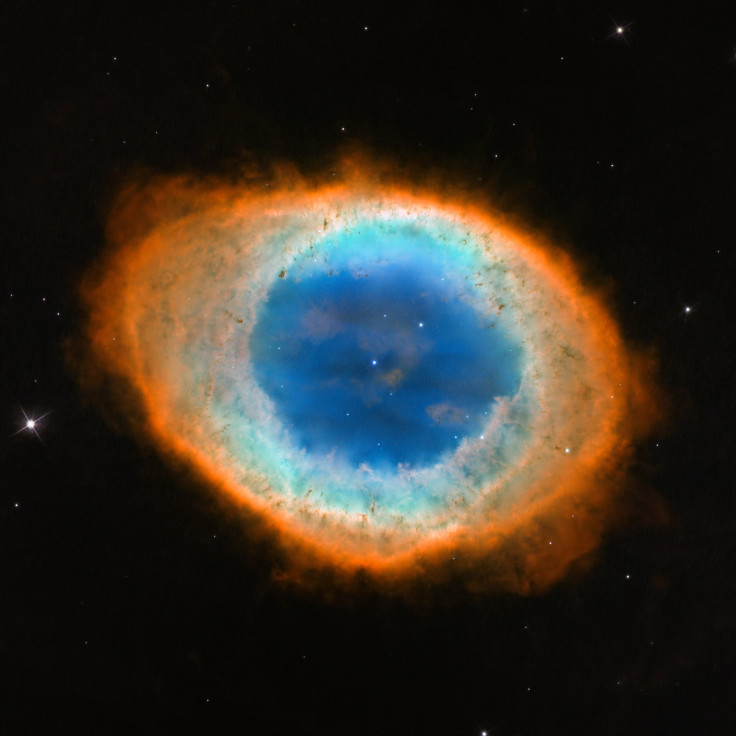
Messier 57, or M57, is known as the Ring Nebula and is located in the constellation Lyra, approximately 2,000 light-years from Earth. The nebula gets its shape as the result of the red giant star at its center ejecting its outer shell of gas.
Necklace Nebula

Hubble captures the Necklace Nebula, PN G054.2-03.4, the remains of a dying star similar to the sun. The nebula is located 15,000 light-years from Earth in the constellation of Sagitta.
Heart-Shaped Pit on Mars
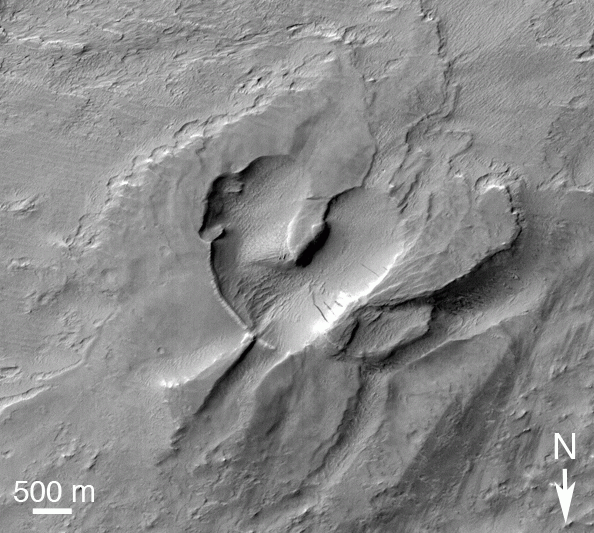
The team in charge of MRO's CTX captured this heart-shaped object on the Red Planet in 2009. The feature is located in the Gordii Dorsum region of Mars.
A Galactic Rose
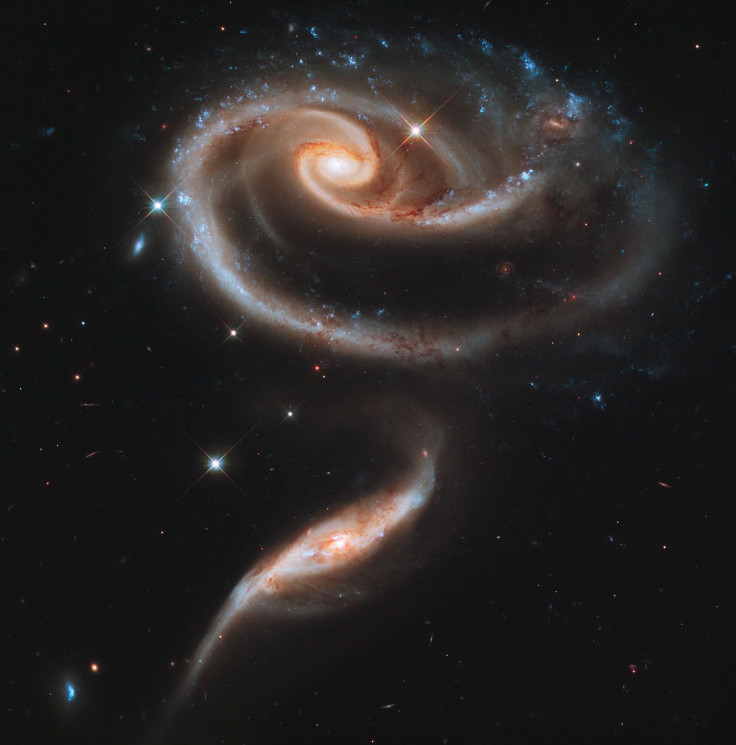
The rose is actually a pair of interacting galaxies, ARP 273, located 300 million light-years from Earth. Hubble captured this image of a spiral galaxy, UGC 1810 and its companion galaxy, UGC 1813.
Another Heart On Mars

Either Mars has a lot of heart-shaped features or the MRO CTX team is really good at finding them. This heart-shaped pit is located in the Hydaspis Chaos region of the planet.
© Copyright IBTimes 2024. All rights reserved.






















